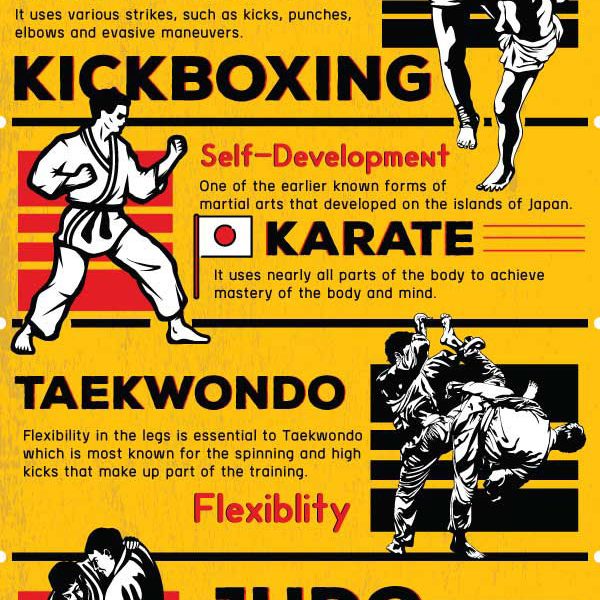The Background And Approach Of Fighting Style: A Deep Dive
The Background And Approach Of Fighting Style: A Deep Dive
Blog Article
Content Composed By-Ingram Stokes
Enter the old globe where martial arts were born out of necessity in varied areas. Societies crafted one-of-a-kind fighting styles linked with historic contexts. Techniques progressed over centuries through devoted practice and social exchanges. Today, modern martial arts blend conventional aspects for optimal performance. Philosophically, martial arts emphasize self-control, self-improvement, and harmony. Respect, humility, and equilibrium are foundational principles leading practitioners in the direction of development and durability. Explore the midsts of this rich history and philosophy to discover the profound impacts forming this enduring technique.
Beginnings of Fighting Style
Fighting style came from different regions around the world, advancing as practical fight systems to resist dangers. These ancient combating styles were developed out of necessity, with each society crafting techniques fit to their one-of-a-kind settings and difficulties. From the grappling arts of Jujutsu in Japan to the striking strategies of Martial art in China, martial arts were deeply intertwined with the historical, social, and social fabric of their corresponding societies.
In Japan, the samurai class polished martial arts like Kenjutsu, the art of the sword, which later on progressed into the much more promoted form of Kendo. On the other hand, in Brazil, Capoeira emerged as a mix of dancing and fight, developed by enslaved Africans as a means to stand up to injustice. Each martial art brings with it a rich background and ideology, showing the values and beliefs of the people who exercised them.
As you look into the beginnings of martial arts, you uncover a tapestry of human ingenuity, resilience, and the unyielding spirit of warriors throughout time.
Advancement of Techniques
With centuries of method and improvement, combat strategies within various martial arts have gone through an extensive evolution. From old designs like Kung Fu and Karate to much more contemporary self-controls such as Brazilian Jiu-Jitsu and Krav Maga, the development of strategies has been driven by a mix of social influences, sensible applications, and technical improvements.
One considerable element of this development is the cross-pollination of techniques between different martial arts. For example, methods from typical Japanese Jiu-Jitsu were incorporated right into the development of Judo by Jigoro Kano in the late 19th century. This blending of designs has actually brought about the growth of hybrid martial arts like Mixed Martial Arts (MMA), which combine components of striking, grappling, and submission strategies.
Additionally, the advancement of strategies has actually been formed by the boosting focus on effectiveness and effectiveness in combat. Specialists have continuously sought to improve their techniques via rigorous training, experimentation, and competitors, leading to the advancement of highly specialized and effective combating designs. In general, the evolution of methods in martial arts shows the dynamic nature of combat and the recurring mission for renovation and advancement.
Philosophical Foundations
Exploring the underlying philosophical concepts of martial arts gives understanding into their core values and directing beliefs. At the heart of numerous martial arts self-controls is the idea of self-control itself. By educating your body and mind to function as one natural device, you cultivate discipline that prolongs past the dojo or gym into day-to-day life. how many kids per instructor martial arts class includes respect, humbleness, and self-discipline, forming not simply your physical capacities yet also your personality.
One more basic philosophical foundation in martial arts is the idea of constant self-improvement. The trip of mastering a fighting style is never-ending, with specialists continuously striving to better themselves, both physically and mentally. This focus on growth fosters resilience, determination, and a growth mindset that can be related to all aspects of life.
Furthermore, martial arts emphasize the importance of consistency and equilibrium. Methods are designed to make use of an opponent's energy against them, highlighting the principle of producing and rerouting force rather than meeting it head-on. This ideology includes social connections, advertising calm resolutions and good understanding. By accepting which martial art for me , martial musicians not only boost their fight skills but additionally cultivate a way of life centered on individual growth, respect, and consistency.
Verdict
To conclude, the history and ideology of martial arts provide a rich tapestry of custom, discipline, and self-improvement.
Take for instance the story of Bruce Lee, who reinvented martial arts by blending various styles and viewpoints to produce his own special kind of Jeet Kune Do.
Through devotion and technology, martial artists continue to press boundaries and inspire others to reach their complete potential both in battle and in life.
